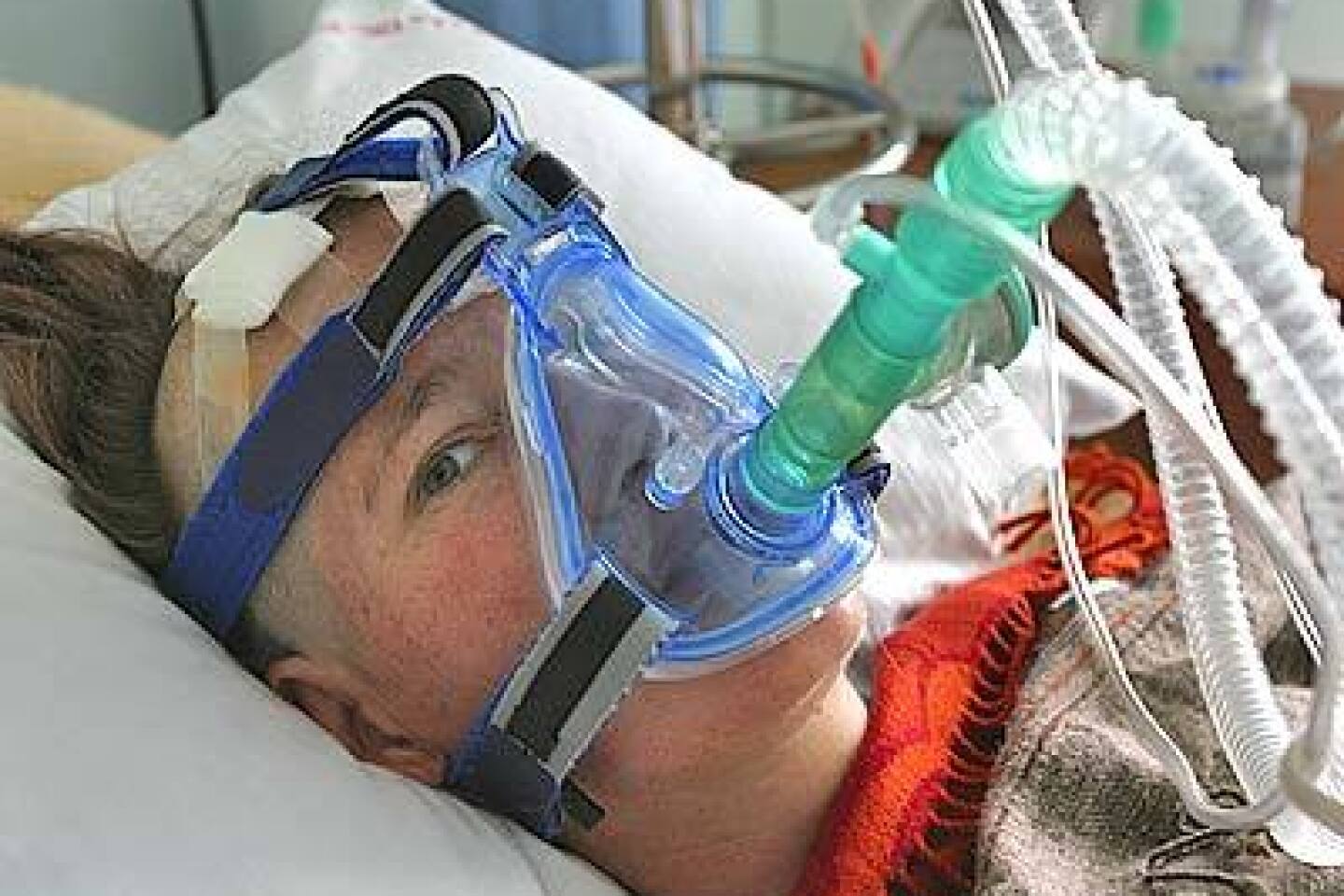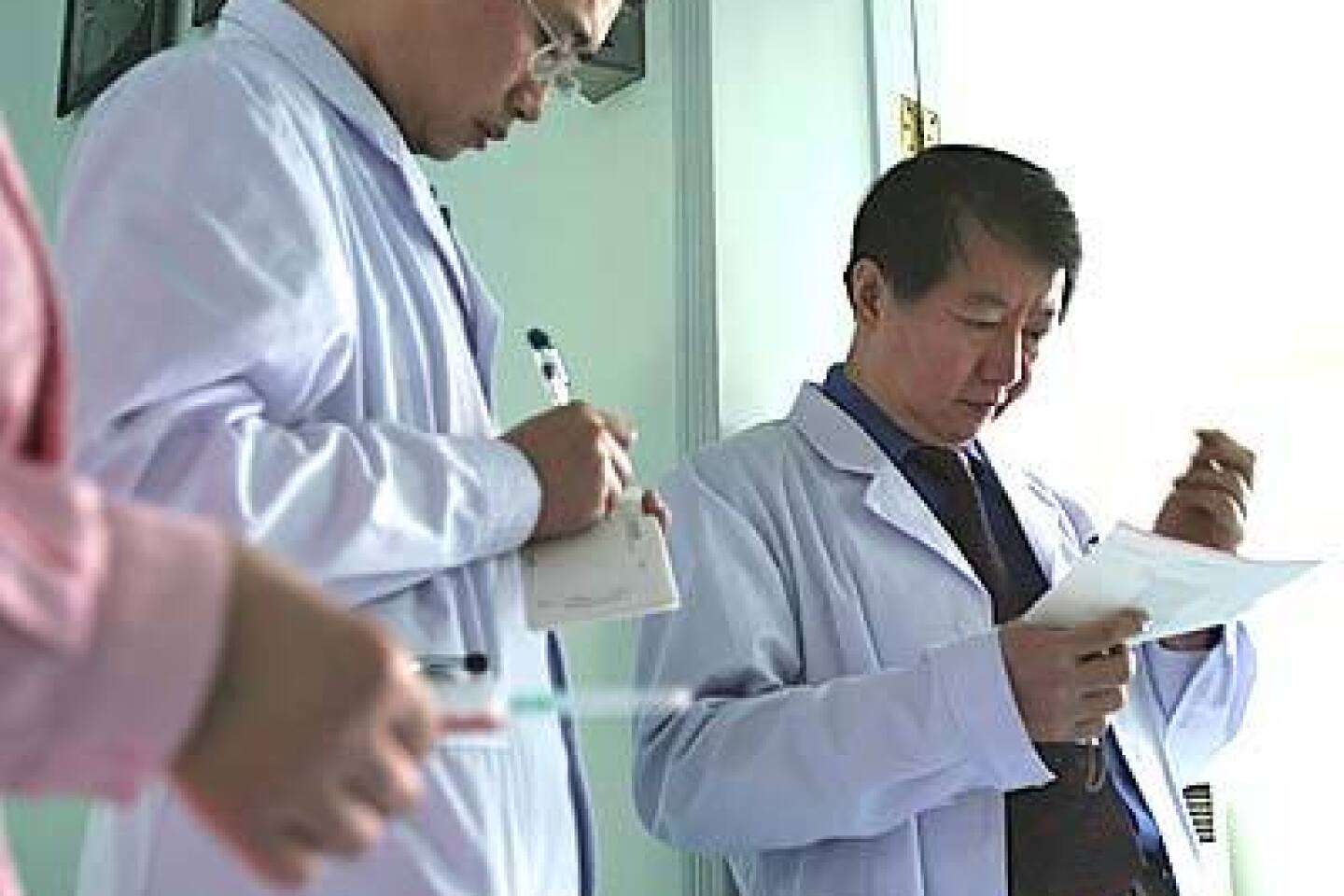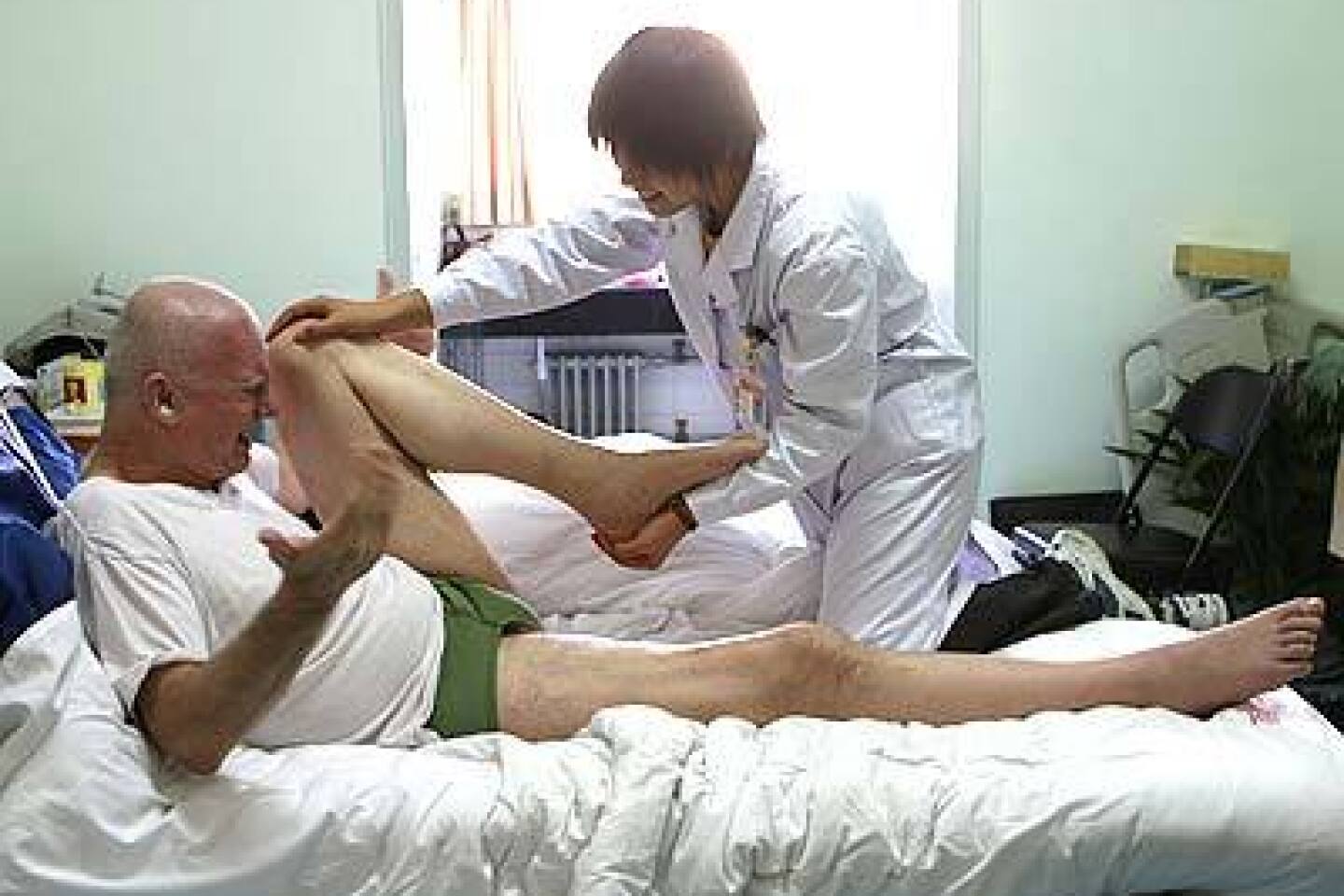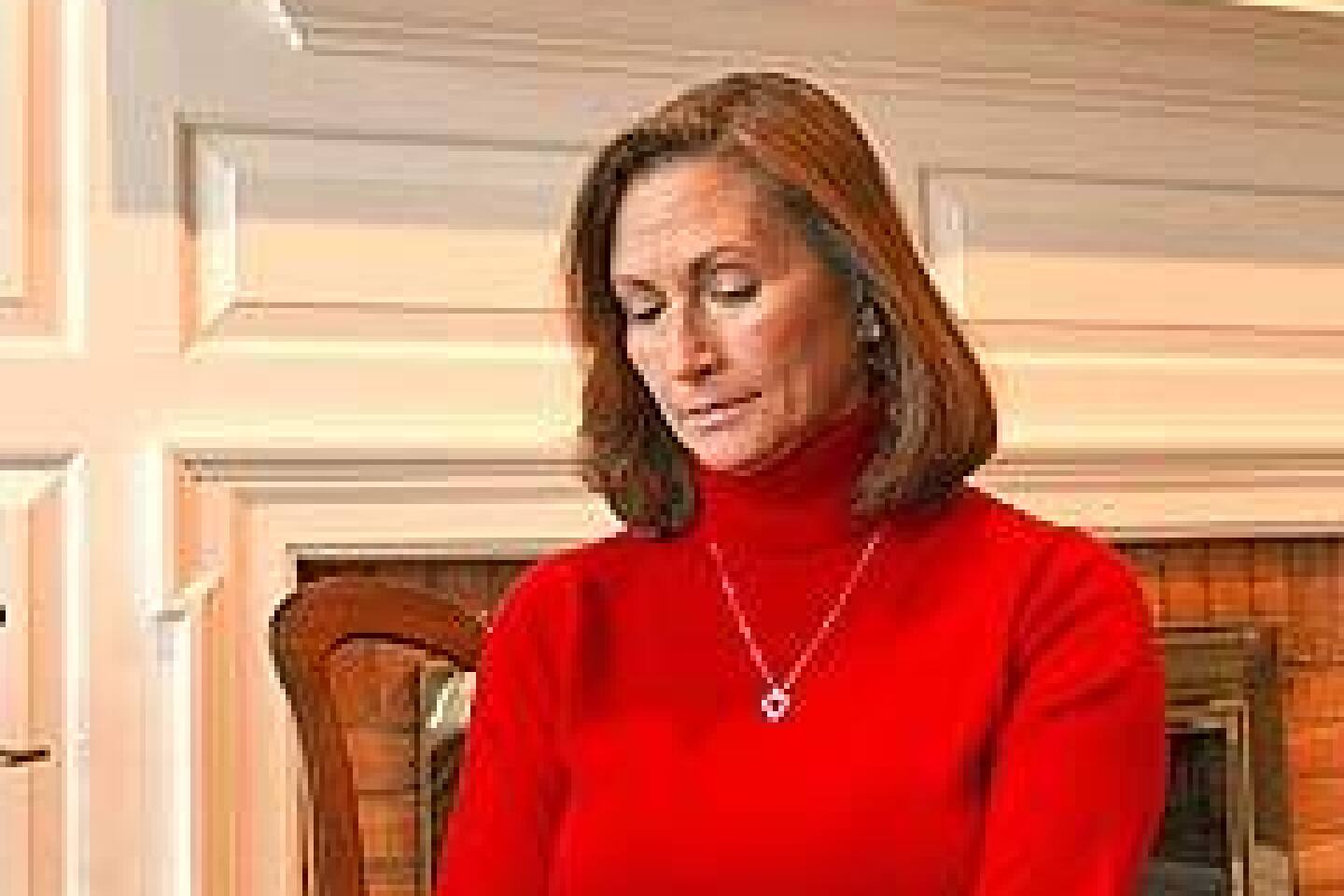Outside the U.S., businesses run with unproved stem cell therapies
- Share via
At the junction of desperation and the fantasies of science is a business opportunity.
Stem cell clinics offering unproven therapies for a range of diseases have become a multimillion-dollar industry, operating in Mexico, Ukraine, Barbados, China and elsewhere.
Charging tens of thousands of dollars, the clinics typically draw patients who have exhausted conventional therapies.
The backgrounds of the people behind the clinics vary — many see themselves as crusaders for the disabled and dying.
The field of stem cells is so new that almost anybody can claim its potential. Without subjecting their therapies to clinical trials — the standard of Western medicine — it is difficult to know if the treatments work.
The clinic operators can point to satisfied patients but not to scientific proof.
At least three clinics trace their roots to the Institute for Problems of Cryobiology and Cryomedicine in Kharkov, Ukraine. Founded in 1972, the institute researched techniques for freezing biological samples for use in medicine and agriculture.
For nearly two decades, scientists at the institute experimented with solutions made from aborted fetuses, injecting people for ailments including diabetes, multiple sclerosis and depression.
Dr. Valentin Grischenko, the institute director who led much of the research, said many patients showed significant improvements.
In the early 1990s, Ukrainian researchers familiar with the institute’s work started a Kiev company called EmCell, charging $25,000 per treatment.
Some of its first American patients came about 10 years ago with Dr. William C. Rader, a Malibu psychiatrist who ran a chain of eating disorder clinics and worked as an on-air medical expert for KABC-TV in Los Angeles during the 1980s.
Rader, who had heard about EmCell through a business contact, later formed his own company, offering treatments in the Bahamas.
The Bahamian government asked him to leave in 2000 after a New York television station aired a critical report.
Rader, who said his cells come from the former Soviet republic of Georgia, now meets patients one weekend a month in the beachfront city of La Romana in the Dominican Republic. His company, Medra Inc., is based in Malibu.
Some families say he has reduced their children’s suffering from brain damage and autism.
He said he has arranged more than 1,000 injections, charging $25,000 for the initial treatment and $8,500 for each follow-up.
“I have literally cured early Alzheimer’s,” he said.
“I think there is a higher power,” Rader said. “I feel that I am just simply a conduit.”
Rader, 66, said he has not published anything about his therapy because that would open him to attack from a “conspiracy” of scientists, government authorities, pharmaceutical companies and abortion opponents.
Dr. Yuliy Baltaytis, a Ukrainian physician who had collaborated with Rader in Europe and the Bahamas, said he doubted his homeland would get credit for the procedure.
“Everybody understands the Moscow ballet. Everybody knows the Kalashnikov rifle. Everybody knows the first man in space was Yuri Gagarin . But nobody believes we can do something first with stem cells,” he said.
Baltaytis now works as scientific director of a separate clinic in Barbados.
The Institute for Regenerative Medicine opened in the summer, charging $25,000 for an injection of fetal cells from the Ukrainian cryogenics institute.
One of the busiest overseas clinics is run by Dr. Hongyun Huang, a 49-year-old Beijing neurosurgeon who says he has a waiting list of more than 1,000 foreign patients.
Huang earned medical and doctoral degrees in China before spending the late 1990s as a postdoctoral student at New Jersey’s Rutgers University, where he was introduced to olfactory ensheathing glial cells.
Found in the lining of the nose and the olfactory bulb of the brain, the cells help replenish neurons that support the sense of smell. They have been studied for nearly two decades with no consensus about their therapeutic value.
Huang and others distinguish them from stem cells, but they hold a similar appeal to researchers and patients for their ability to regenerate themselves, at least in laboratory cultures.
Huang returned to China in 2000 eager to try them in humans. He treated people with spinal cord injuries before taking on patients with amyotrophic lateral sclerosis, or ALS, injecting the cells into holes drilled into their skulls.
Most of his patients are from the United States and Europe. They pay $20,000 each for the surgery.
Unlike most operators of overseas stem cell clinics, Huang has confronted his skeptics.
So many Americans had gone to China for his therapy that the nonprofit ALS Therapy Development Foundation flew him to Boston in the fall to explain his technique to a group of Harvard University researchers.
His evidence consisted of five short videos showing ALS patients before and after treatment.
The “before” shots showed patients in hospital beds or staggering on crutches. The “after” shots included a patient who sang on command, a woman who took a few steps with the help of hospital workers and a Chinese man who could stick out his tongue.
Huang believed he had made his point.
It was a puzzling display for the Harvard doctors. Where were the data? What was the biochemical mechanism?
“We don’t know this,” Huang responded.
The Harvard scientists suggested that Huang was only seeing the placebo effect, perhaps amplified by his own desire to be right. Or, they said, he was simply watching the normal ups and downs of a disease.
Huang acknowledged that his evidence was slim, but he believed he was at least offering hope to his patients.
“Most American doctors just tell patients, ‘You will die soon. You can’t get any treatment,’ ” he said in an interview. “I never tell patients this word. Even in this condition, you must encourage the patient.”
After his talk, Huang was packing up his computer when Philip Decter of West Orange, N.J., approached him. ALS was slowly crippling his 44-year-old son, Andrew, who was there in a wheelchair.
The father wanted to know when they could come to China.
More to Read
Sign up for Essential California
The most important California stories and recommendations in your inbox every morning.
You may occasionally receive promotional content from the Los Angeles Times.
















